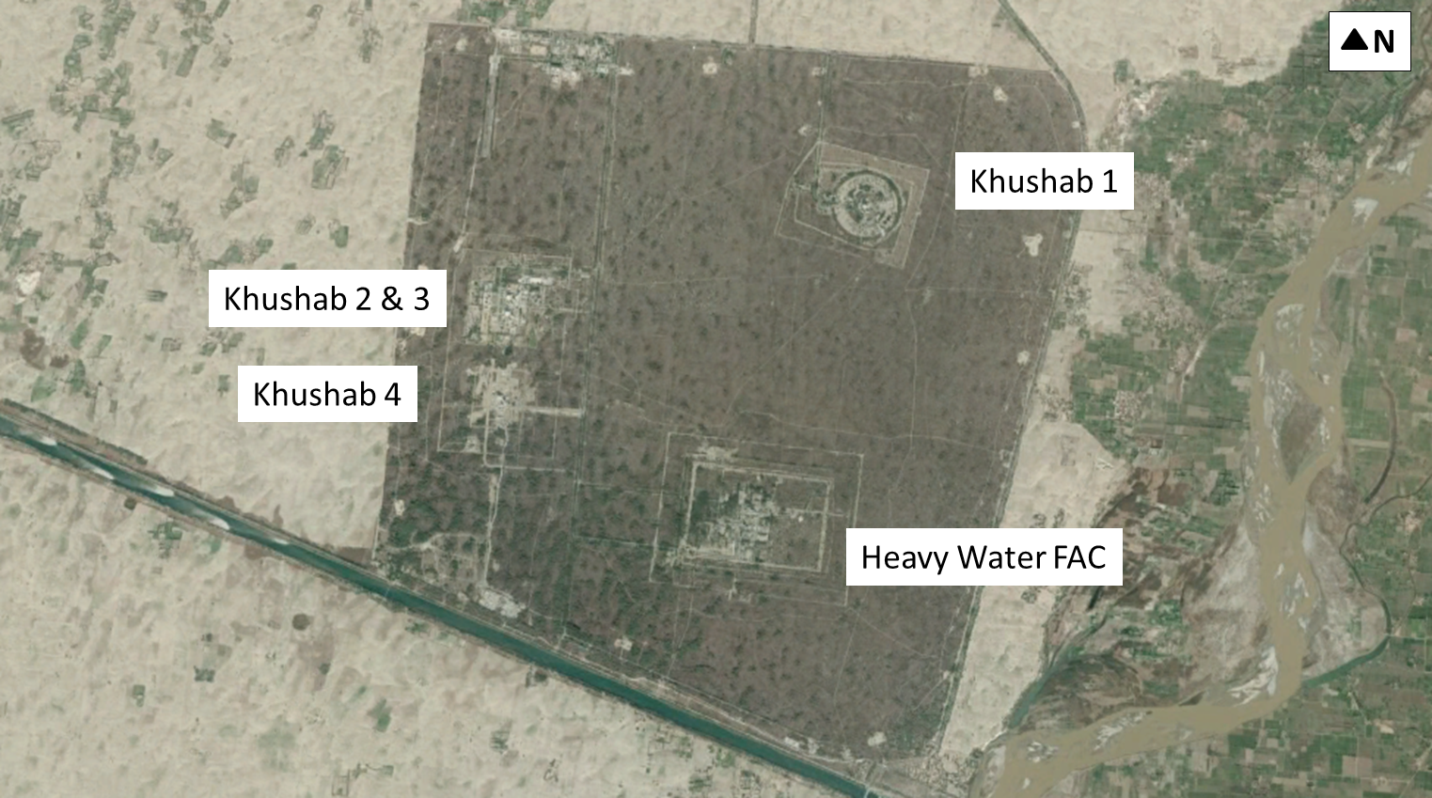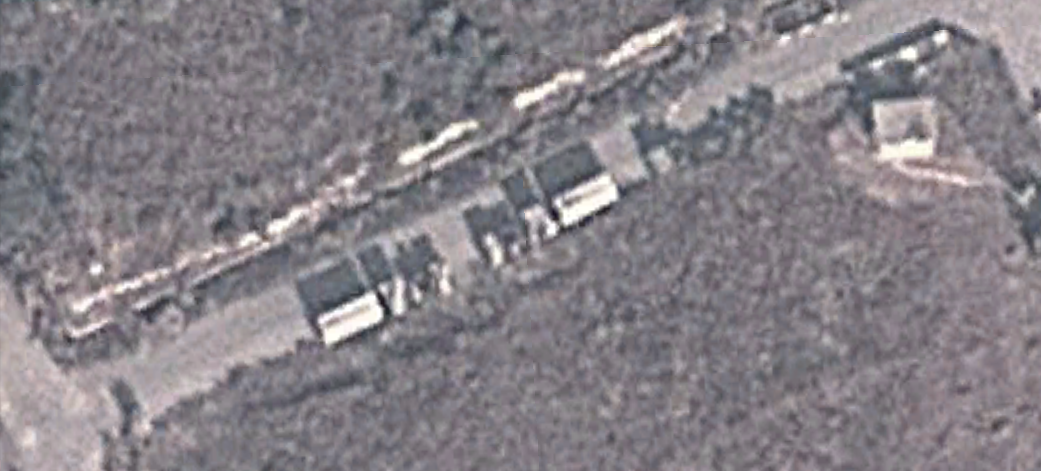Pakistan Could Soon Have More Nukes Than the U.K. and France

And smaller and more destabilizing ones, too
by CHRIS BIGGERS
Pakistan has one of the fastest growing nuclear stockpiles in the world.
Islamabad refuses to release any information regarding its nuclear
stockpile, but open sources suggest it possesses as many as 120 atomic
warheads.
And lately,
Pakistan has been working hard to shrink the warheads’ size and fit
them on smaller, more flexible tactical missiles. That effort has some sobering implications.
A satellite image from January 2014 seems to indicate
that Pakistan’s National Defense Complex has finished fitting out of
two additional Hatf-7 Babur cruise missile launchers, one of the few
non-strategic nuke systems that Pakistan could deploy against an
attacking Indian army.
The 350-kilometer-range Babur, which debuted in 2005, is Pakistan’s
first land-attack cruise missile. There’s also an air-launched version.
The more recent Nasr, a surface-to-surface missile system with a
60-kilometer range, first appeared in 2011.
Both platforms are highly mobile and sport technology that many analysts believe originated in China.
We don’t know how many of each system Pakistan’s NDC
has produced, but continuing production underscores Islamabad’s
intention to deploy nukes to counter India’s conventional forces.

Pakistan and India have been at odds since
decolonization. The two countries clashed over Jammu and Kashmir in
1947, 1965 and 1999, over the creation of Bangladesh in 1971 and almost
recently over the Indian parliament and Mumbai terrorist attacks in 2001
and 2008.
The tense relationship got tenser when both countries conducted nuclear weapons tests in 1998.
To be fair, the regional atomic arms race on the
subcontinent is tiny compared to the USA and the USSR’s own race during
the Cold War. There has been no South Asia equivalent of the Cuban
missile crisis, no false alarms or computer glitches that could have led
to massive retaliation on a catastrophic scale.
But that doesn’t mean we shouldn’t worry.

Pakistan, in particular, is a problem. Due to India’s
overwhelming conventional forces, Pakistan increasingly sees nuclear
weapons not as a strategic deterrent but as a means to help level the
playing field — or so it says.
Parroting sentiments in the army, Pakistani
politicians often cite the bomb as the ultimate guarantor of the
nation’s security. Not surprising, Islamabad is boosting its fissile
material production capacity and building more warheads in the process.
According to the International Panel on Fissile
Nuclear Materials, those countries maintain approximately 225 and 300
warheads, respectively.
Satellite imagery from 2013 suggests
that Pakistan has begun operating its third plutonium production
reactor at Khushab. Imagery from 2014 shows further progress on a fourth
reactor that’s still under construction.
Each of the three 50-megawatt
reactors produces approximately 11.5 kilograms of weapons-grade
plutonium, providing up to 35 kilograms per year. When the fourth comes
online, possibly around 2016, Pakistan could be producing up to 46
kilograms a year.
And since the Khushab complex went operational in
1998, Pakistan has been shifting from highly enriched uranium to
plutonium-based weapons. This is an important development if the country
wants to create smaller and lighter warheads. A typical plutonium
weapon requires four kilograms of Pu-239 to create a bomb, while HEU
devices require 15 kilograms of U-235.
Using plutonium can mean a lighter device on a smaller and more mobile missile.
More and more, Pakistan’s military planners believe they need these
tactical nukes to balance India, which in April 2004 proposed a new
military doctrine emphasizing rapid mobilization and offensive
operations.
Pakistan’s potential tactical nukes could lower the barrier to a nuclear exchange. At least that’s what Indian officials believe.
“India
will not be the first to use nuclear weapons, but if it is attacked with
such weapons, it would engage in nuclear retaliation which will be
massive and designed to inflict unacceptable damage on its adversary,”
Shyam Saran, former Indian foreign secretary and the current chairman of
India’s National Security Advisory Board, told an audience at Delhi’s
Habitat Centre in April.
“The label on a nuclear
weapon used for attacking India, strategic or tactical, is irrelevant
from the Indian perspective,” Saran said.
“[A] limited nuclear war is a contradiction in terms,” he
continued. “Any nuclear exchange, once initiated, would swiftly and
inexorably escalate to the strategic level. Pakistan would be prudent
not to assume otherwise as it sometimes appears to do, most recently by
developing and perhaps deploying theater nuclear weapons.”
All that said, it’s unclear how close Pakistan is to actually deploying its tactical nukes. Likewise, India has only proposed its new offensive doctrine—it hasn’t implemented the plan. But that’s not to say tragic miscalculations couldn’t occur.
“Pakistani
motivation is to dissuade India from contemplating conventional
punitive retaliation to sub-conventional but highly destructive and
disruptive cross-border terrorist strikes,” Saran said.
But it seems unlikely New Delhi will
cave to the implicit threat. And what happens when India calls
Pakistan’s atomic bluff? Assuming it is a bluff.
No comments:
Post a Comment